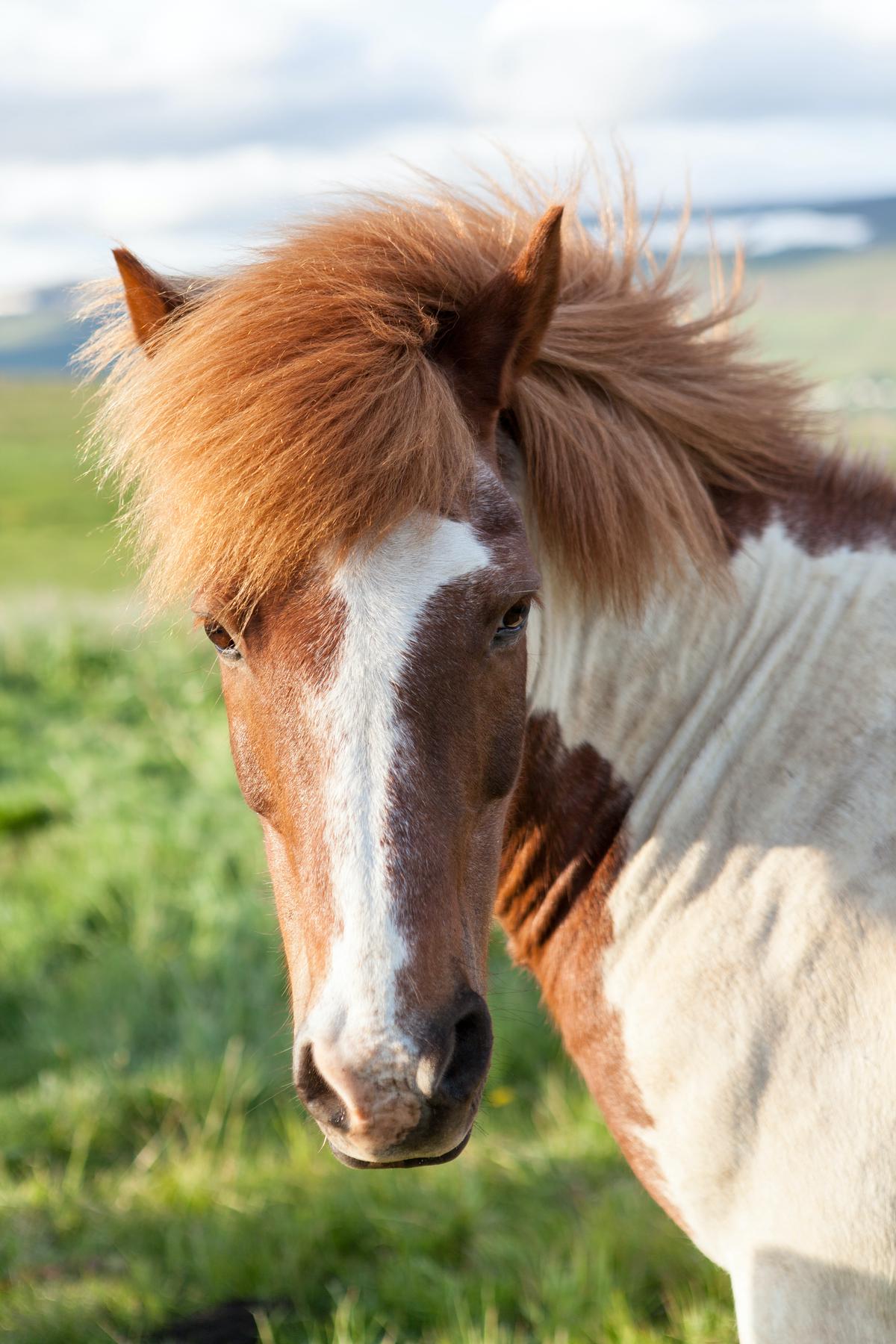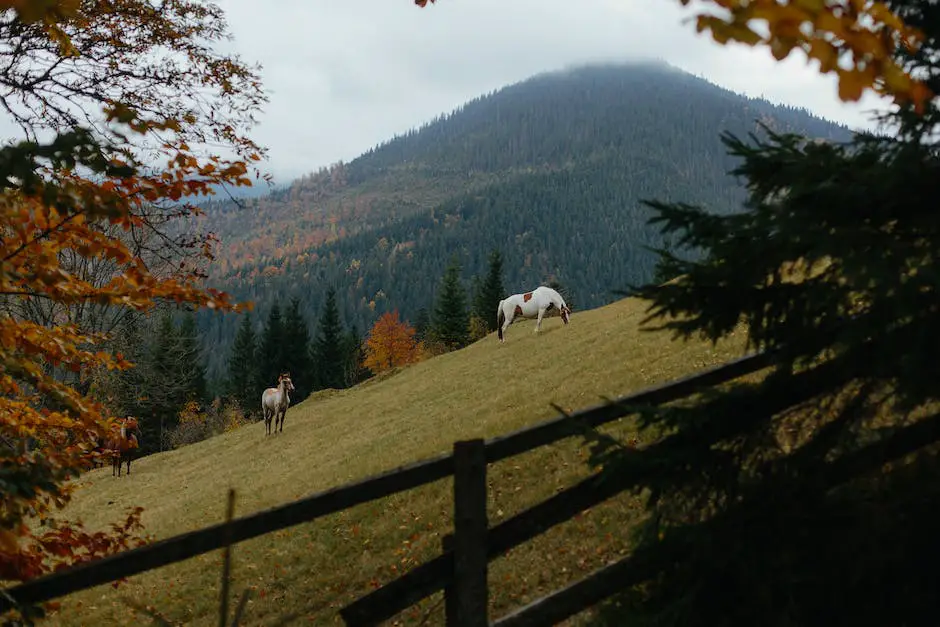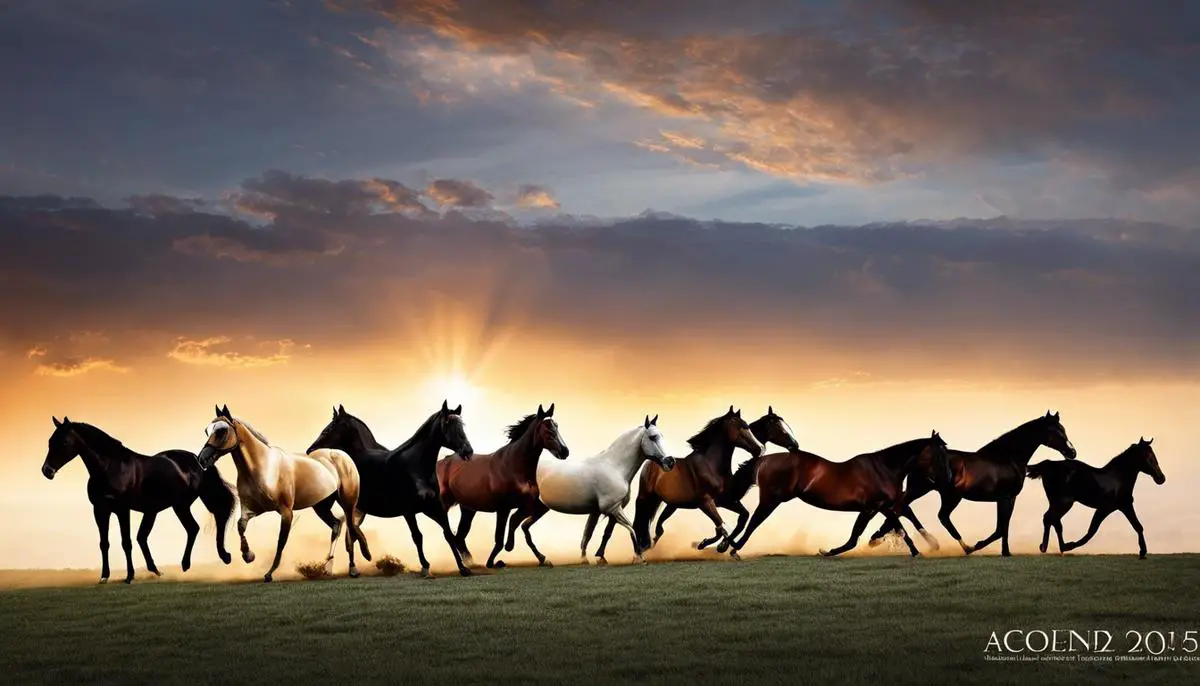The warmblood horse, a majestic breed with a rich and varied history, has captured the hearts and minds of horse enthusiasts worldwide. With its origins tracing back to Europe, the breed’s distinct color variations, physical structure, and unforgettable temperament have made it a highly sought-after breed. From the stunningly powerful Hanoverians to the agile Holsteiners, understanding the charismatic warmblood horse involves delving into its intricate origins, identifying its individual traits, and comprehending the subtle differences among sub-breeds.
Table of Contents (Horspedia)
The Origin of Warmblood Horses
The Fascinating History of Warmblood Horses – Tracing the Legacy Remain on Top
The origin and history of Warmblood horses is a tale that delights equine enthusiasts worldwide. Synonymous with grace, agility, and robust endurance, Warmbloods have carved their unique space in the landscape of horse breeds. The story woven behind these majestic creatures brims with intrigue and evolution, shaping their stature across centuries.
The term “Warmblood” stems from laying in the middle of the thermal spectrum for horses. They are not as hot-blooded as the quicker, more agile racehorses, nor as cold-blooded as the sturdy draft horses. The categorization reflects their fine balance of speed, power, and temperament, making them excellent sport horses.
The fascinating history of Warmbloods swoops in from Europe, a significant heritage destination. Each region fostered these horses, shaping them based on the specific needs and demands of that locale. This regional shaping resulted in the various strains of Warmbloods recognized today, such as the German Hanoverian, Dutch Warmblood, and Swiss Warmblood.
The genesis of Warmblood horses can be traced back to the Middle Ages, where they served as war horses. They lent their strength and stamina to knights, stylishly clad in heavy armor. They had the endurance to engage in long battles, and the agility to adjust swiftly in the middle of conflict.
Post-war years saw a transformation of their roles. As assiduous farmhands in the agricultural industry, they pulled heavy machinery and aided in transport. Their robust energy and impressive strength were indispensable assets to farmers.
However, the advent of the Industrial Revolution prompted another consequential shift for Warmbloods. With machinery taking over agricultural tasks, these big-hearted equines found their calling in sport and recreation.
Selective breeding programs sprouted across European locales in the 16th century, directed towards cultivating horses adept at dressage, jumping, and carriage driving competitions. They were crossed with Thoroughbreds to infuse speed and endurance. This mix instilled the Warmblood breeds with a unique blend of athleticism, temperament, and stamina.
These strategic breeding programs, focused on their abilities rather than their pedigree, made them champions in the Olympic equestrian events. It’s a testimony to their inherent excellence that Warmbloods dominate most international competitive horse riding events today.
The captivating journey of Warmblood horses from war fields and farm fields to international competition fields is truly intriguing. Their historical evolution shaped their temperament and designed their physicality to be indispensable assets in several spheres over different epochs. This narrative thrives today within the physique and prowess of every Warmblood horse that prances with grace and strength across fields and arenas worldwide. This inherent legacy makes every Warmblood more than just a horse; it’s a velvety touch of history. This incredible breed continues to create waves of fascination, echoing its rich heritage and unspoken valor.
So, here it is! The tale of our prized Warmbloods, carrying centuries of adaptive history within their robust hearts, commanding respect and admiration, and galloping toward an equally triumphant future!

Photo by wildlittlethingsphoto on Unsplash
Identifying Warmblood Traits
Title: Unveiling The Peculiar Traits of Warmblood Horses
Warmblood horses harbor an exceptionally rich history filled with valiant war feats, agricultural prowess, and remarkable Olympic dominance. Yet, beneath these layers of illustrious accomplishments, exist inherently unique attributes that render Warmbloods intriguingly distinct.
It starts with their natural demeanor. Warmbloods exude an air of nobility and grace, but it’s their quiet strength and calm disposition that truly set them apart. These horses are, for the most part, known for their exceptional temperament. They are eager to please, making them extremely trainable, and are generally quite patient, ideal for riders of varying skill levels.
Furthermore, Warmbloods may be broadly classified as ‘sport horses.’ Still, it is their versatility that captures the eye. They excel not just in one, but in a multitude of sporting disciplines. The precise balance between power and agility turns them into formidable competitors, in dressage, show jumping, and eventing. One moment they’re exuding calm, collected elegance in the dressage ring, the next they’re leaping over towering obstacles with the might of a high jumper. Warmbloods truly embody the phrase “Jack of all trades but a master at each one.”
Examining physical characteristics, Warmbloods fall into the ‘Goldilocks’ category of size. They’re just right – not too small like the Spanish horses, or too bulky like the draft breeds. Their beautifully proportioned bodies, typically standing between 16 to 17 hands, give them an ideal balance of strength and agility, making them perfect for competitive sporting disciplines.
Their performance is also deeply ingrained in their unique genetics. Selective breeding practices not only focused on physical attributes but also highlighted specific temperament traits, athleticism, and potential performance levels. This breeding focus resulted in horses with a distinct gene pool, famous for their intelligence, willingness to work, and athletic ability.
In the field of adaptability, Warmbloods showcase a remarkable ease in coping with various climates and environmental changes, proving their resilient nature. It’s no surprise to find Warmbloods making themselves comfortably at home in different parts of the world, from the chilly Nordic climates to the dry heat of the American southwest.
Lastly, while Warmbloods color and markings may vary, these horses often flaunt a rich bay, chestnut or gray coat. Despite this variation, many Warmbloods exhibit a characteristic warm sheen, perhaps a physical testament to their historical past, which so frequently intertwines with the tumultuous, fiery tales of war and perseverance.
Warmbloods, in all their grace and might, continue to capture the hearts of equestrians worldwide. Beyond their impressive physical prowess and temperamental advantages, it’s these subtle, unique attributes that truly define them. Whether it’s their noble carriage, versatile disposition, perfect size, resilient nature, or their warm sheen, each Warmblood carries a piece of equestrian history within them, making them not just extraordinary companions but captivating storytellers of an era gone by.

Warmblood Breed Variations
As we delve deeper into the fascinating world of warmblood horses, it’s easy to get hooked on the diversity and versatility of the different sub-breeds that have evolved. Each sub-breed is chock-full of unique traits, providing a veritable rainbow of desirable features. We’re talking varying physical traits, differing temperaments, and even noteworthy adaptability to different climates.
This brings us to an essential aspect – the personalities attributed to different Warmblood sub-breeds. Let’s consider the Dutch Warmblood, for instance. This breed carries a reputation for its resolute steadiness and heartfelt eagerness to please. Furthermore, its robust fortitude and impressive work ethic are the glue that binds many a rider to their mount.
On the other side of the spectrum, consider the fiery personality of the Westphalian Warmblood. These horses are renowned for their intelligence and competitiveness. They often thrive best with someone who respects their independence and still manages to build a bond based on mutual trust.
Not to be left out is the Hanoverian horse, a breed synonymous with grace and elegance. They’ve carved a niche for themselves with sheer flexibility and exceptional abilities in jumping, making them a preferred choice for those seeking a partner in sport horse disciplines.
Physical traits also vary greatly across sub-breeds. The robust build of the Trakehner breed, along with its long, arched neck and dense bone structure, offers enhanced sturdiness. The Belgian Warmblood, on the other hand, with its lighter frame and longer limbs, excel in speed-oriented events like jumping and three-day eventing.
Shifting our attention to adaptability, it’s interesting to note that sub-breeds like the Oldenburgs and Hanoverians withstand a broad spectrum of climates with ease due to their hardy constitution.
Warmbloods are typically solid in color, but each sub-breed still has unique markings. For instance, Selle Français are often bay or chestnut with white markings, while Holsteiners, though mainly black or bay, feature a brilliant contrast of strong dark colors against bright white markings.
And finally, tracing the lineage of some sub-breeds leads to an intriguing storybook of history. The feared Spartan warriors rode the ancestors of today’s Swiss Warmblood, while the roots of the Danish Warmblood can be traced back to the blood of the Great Danes used as royal carriage horses.
In essence, the diversity and range of traits across different Warmblood sub-breeds make them more than just a hobby for many. They’ve become a lifelong passion, an obsession that involves endless discovery, learning, and admiration. Delving into this world can be overwhelming, yet entirely gratifying, as it presents limitless avenues to deepen our relationship with these noble creatures.

Proper Care for Warmblood Horses
Now that we’ve traversed the impressive history and inherent attributes of Warmblood horses, let’s delve deeper into nurturing these exquisite equines. Maintaining and promoting their health lies at the heart of our commitment to these grand creatures.
Firstly, diet plays a paramount role in the upkeep of Warmblood horses. In essence, they thrive on a balanced diet of high-quality hay, supplements, fresh grass and grains. Each Warmblood variety might require slightly different nourishment, so it’s advised to consult with a horse nutritionist or an experienced vet for accurate, breed-specific diet plans.
Regular exercise is equally crucial for Warmbloods. These horses carry a burst of energy given their historic roles in war and sport, thus they need plentiful opportunities for physical activities, including running, trotting and jumping exercises. It is equally important to include rest days in their schedule to prevent overexertion.
Routine veterinary check-ups are crucial too. Treating potential health issues in their early stages goes a long way toward prolonging the lifespan of Warmblood horses. Vaccinations, dental health checks, worming and farrier work should be regularly scheduled to maintain optimal health.
Keep in mind, mental health is as significant as physical health. Socialization, mental stimulation and bonding time with their human caretakers are pivotal to a Warmblood’s well-being. Though some sub-breeds are more gregarious than others, all Warmbloods benefit from good company and brain-stimulating activities. A bored or lonely Warmblood is not a happy Warmblood, and their performance in sport can also be adversely affected.
Recognizing and responding promptly to changes in behavior plays a significant role in horse welfare. Subtle changes could be indicative of health issues – and being in tune with an individual horse’s personality can avert potential problems before they escalate.
The art of grooming cannot be understated too. Daily brushing keeps their coat, mane and tail healthy and shining, while relieving them of dirt and potential skin issues. Add a little pampering in the mix too – Warmbloods appreciate a good bonding experience through gentle strokes and loving care!
Last, but certainly not least, is ensuring comfortable accommodations. A clean, spacious stable with adequate bedding is essential. Access to open green spaces for grazing is also desirable when possible.
In closing, there are no shortcuts to nurturing Warmblood horses. Their care requires knowledge, time, and dedication, but the rewards are immeasurable. These magnificent creatures with their rich legacy, unparalleled athleticism and humble demeanor, rely on the diligence of their human friends for care – and in return, they offer an incredible equine partnership that’s simply beyond compare.

Photo by wildlittlethingsphoto on Unsplash
In understanding and appreciating the warmblood horse, it is not only about recognizing their distinctive traits and breed variations but also learning about the proper care these magnificent creatures require. A successful relationship with these horses involves a combination of good feeding practices, meticulous grooming habits, and effective training methods to expand their athletic potential. The subtle nuances of building a warm and understanding relationship with these horses are equally important as maintaining their physical well-being. Only then can a true appreciation for these exceptional creatures be attained.

